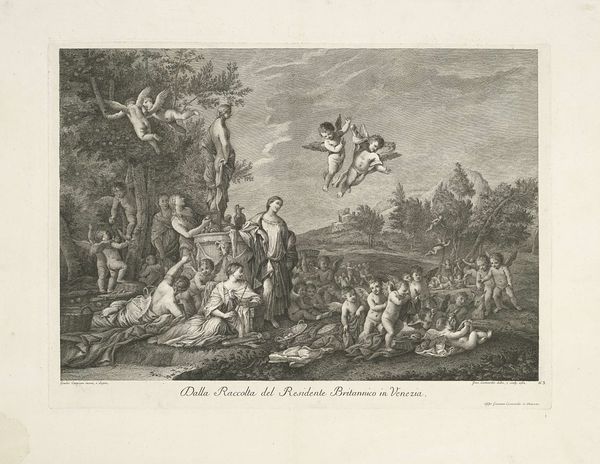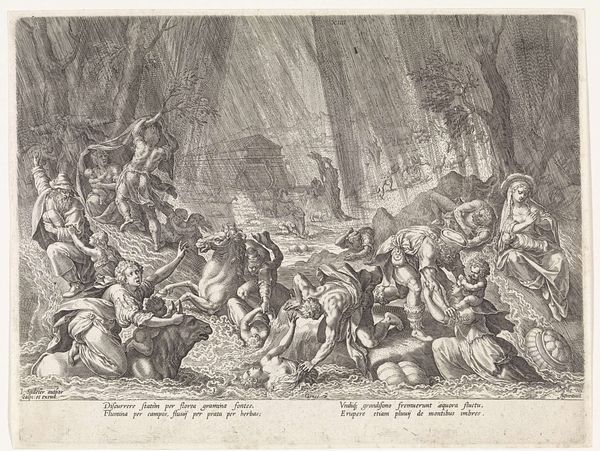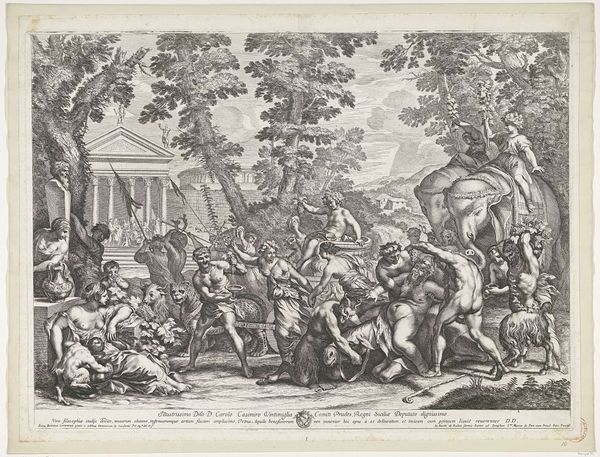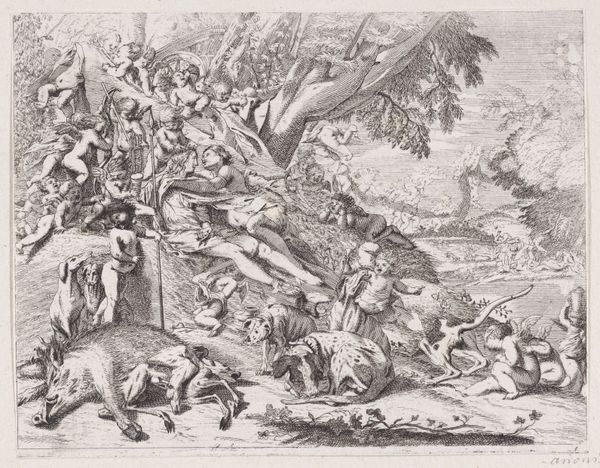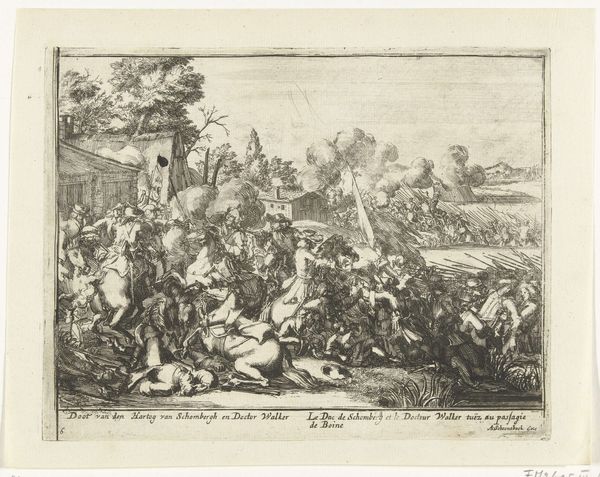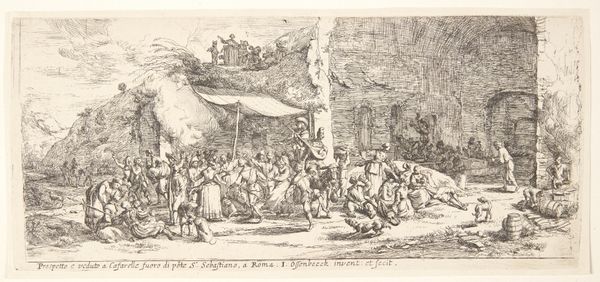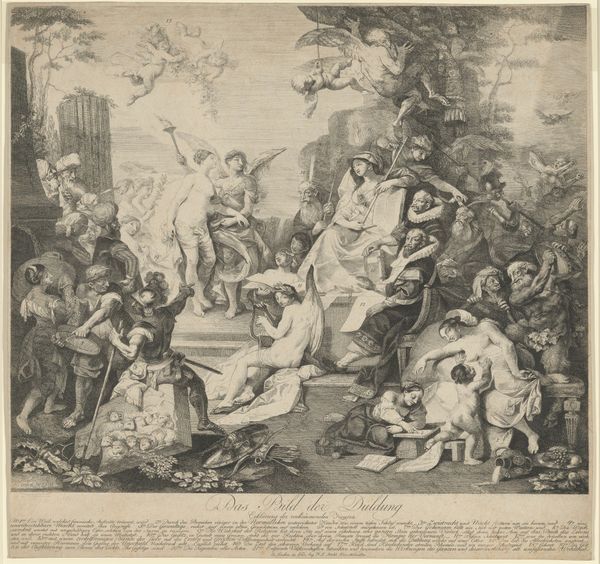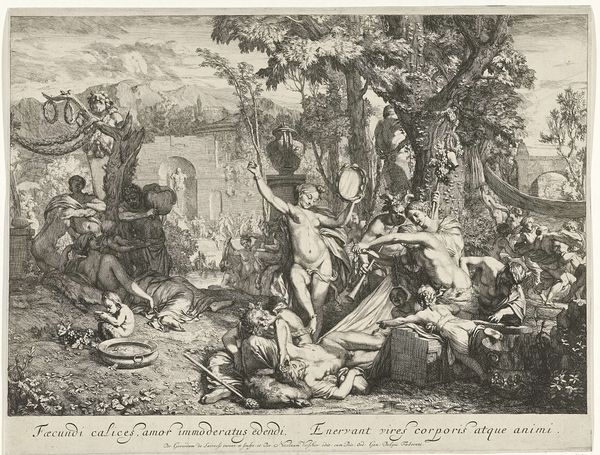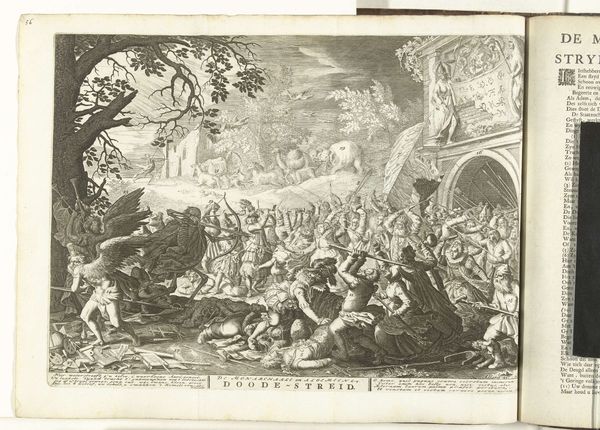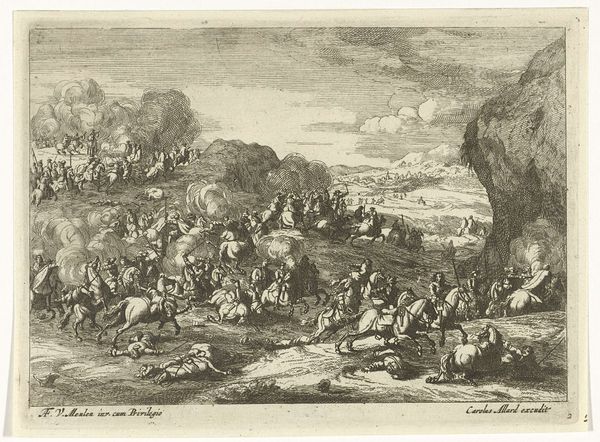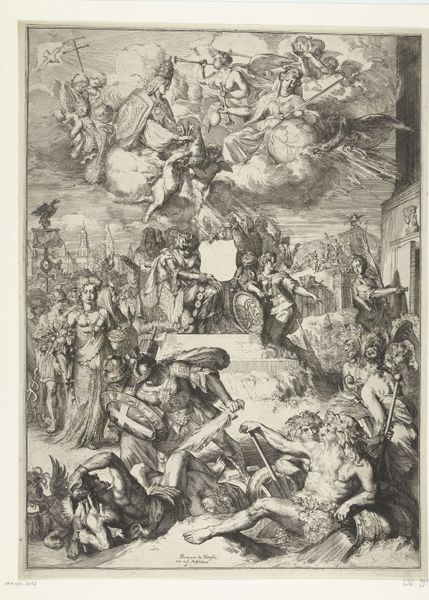
drawing, print, engraving
#
drawing
#
narrative-art
#
baroque
#
pen drawing
# print
#
landscape
#
cityscape
#
history-painting
#
engraving
Dimensions: height 560 mm, width 630 mm
Copyright: Rijks Museum: Open Domain
Curator: Oh, wow, look at this scene! It's like a slightly crazed, very detailed, historical mosh pit! All that energy caught in monochrome. Editor: Indeed. This is Steven van Lamsweerde's "The Amersfoort Stone Dragging," made in 1661. An engraving, capturing a rather peculiar local event, it seems. Curator: Stone dragging? Is that...literally what they're doing? It looks brutal! You've got crowds, like, ripping each other apart. Figures climbing trees like frantic squirrels... what's the story here? Editor: The story is rather farcical. It depicts the citizens of Amersfoort dragging a large boulder into their city, a task commissioned, then quickly regretted. Lamsweerde renders the scene with a chaotic, almost grotesque energy, emphasizing the sheer absurdity. The visual structure plays with foreground and background—note the way the central group pushing the stone echoes and parodies the larger crowd and distant city, with the stone dominating their entire landscape. Curator: So it's a commentary? On the...folly of civic pride or something? All this work for one dumb rock. It feels so very, deeply human, you know? A bit dark, even. And the engraving technique, it gives this swirling dynamism, everything feels about to collapse. I can almost smell the sweat and frustration. Editor: Precisely! Lamsweerde utilizes engraving to create complex tonal variations, lending depth to the chaotic crowd. The sharp lines delineate individual figures while the broader, softer areas suggest atmosphere. The perspective, tilting slightly, contributes to that feeling of imminent collapse you described. Look at the details. Consider that coat of arms sitting below the picture, that seals off the view. Curator: It feels... prophetic, somehow. As if we never learn! Like we are forever stuck dragging metaphorical, pointless stones for equally suspect reasons! But the visual...it almost transcends the specific history. What do you think, on that perspective? Editor: In visual terms, the composition here is an intellectual, somewhat ironic dance between precision and abandon. I think the effect is something pretty unique to his time. Curator: You are right, this has stuck with me. Maybe sometimes the most beautiful things are also kind of messy and chaotic, or else is that my interpretation only. Thanks! Editor: That’s not for me to say. But let’s leave it there, I am keen on going forward with our tour now.
Comments
No comments
Be the first to comment and join the conversation on the ultimate creative platform.
